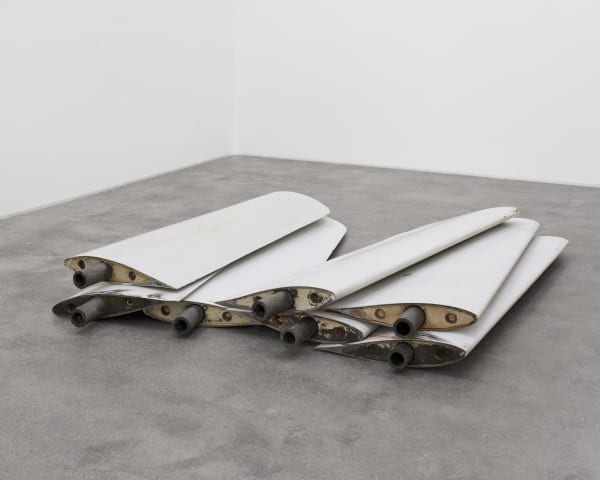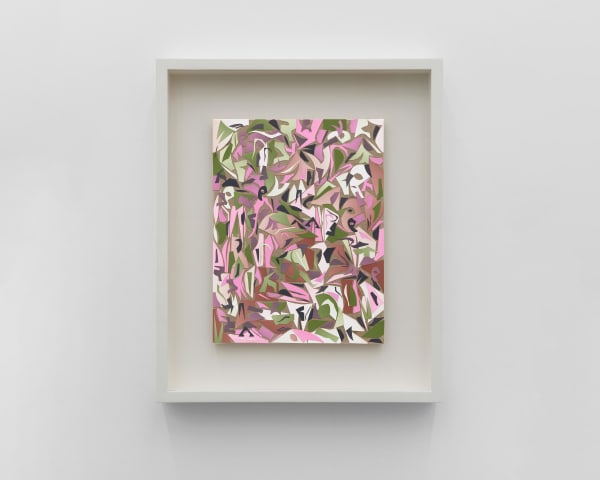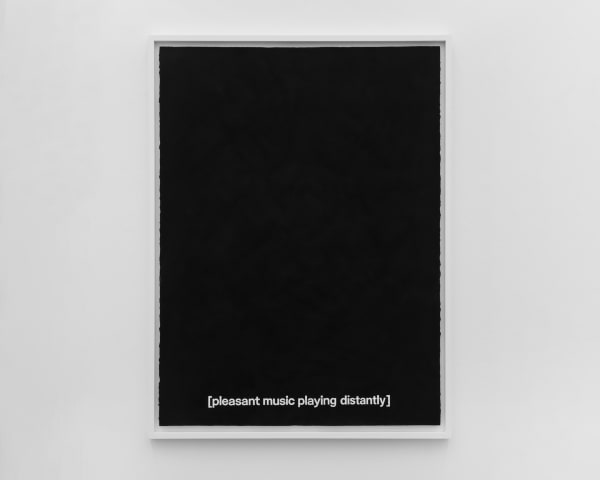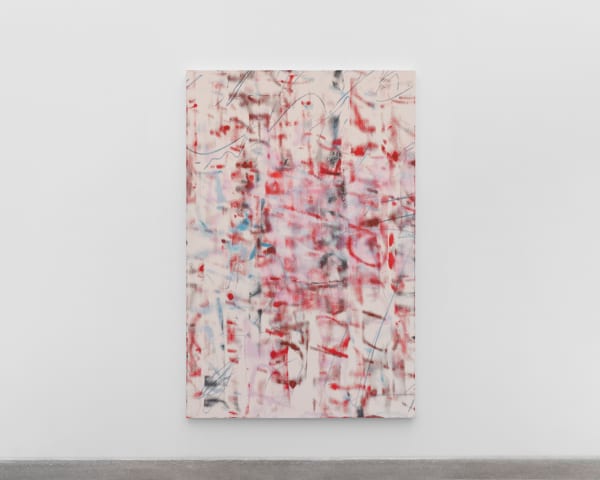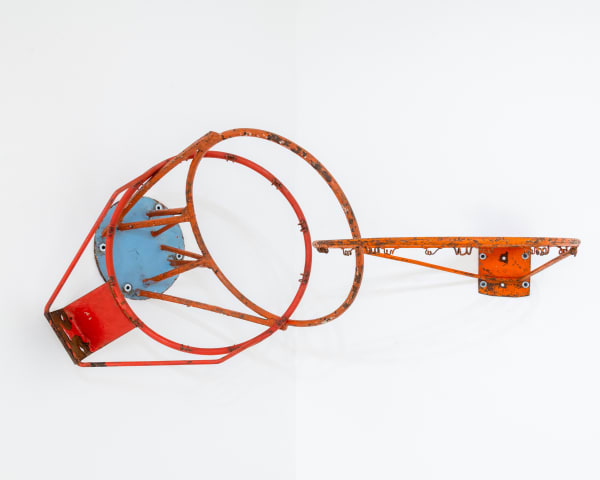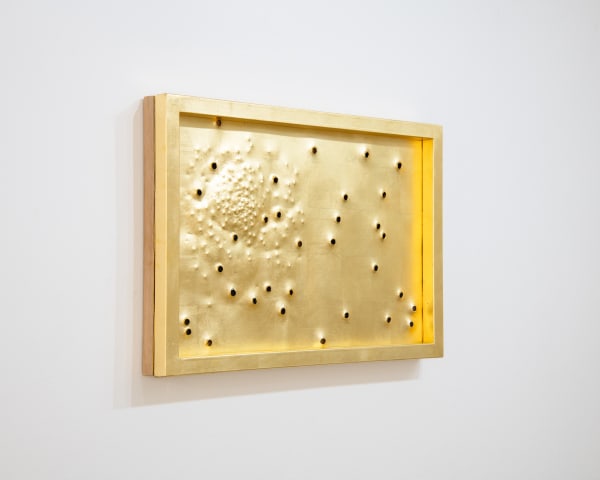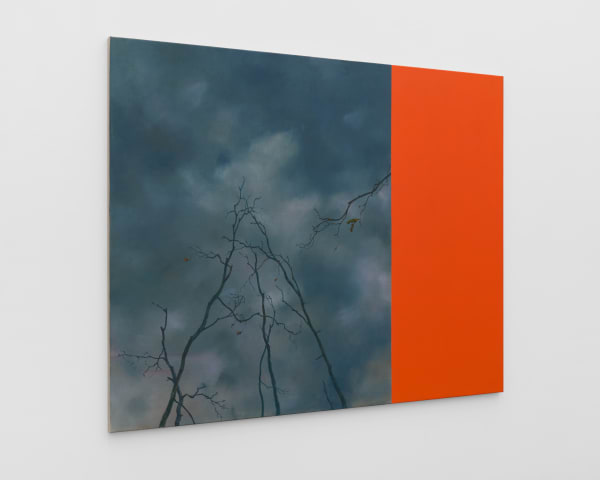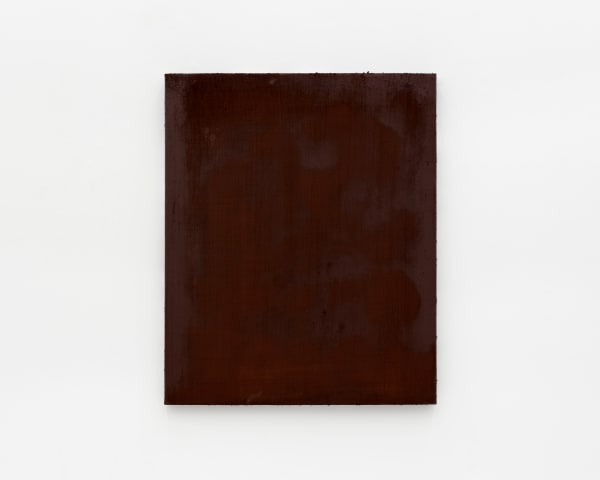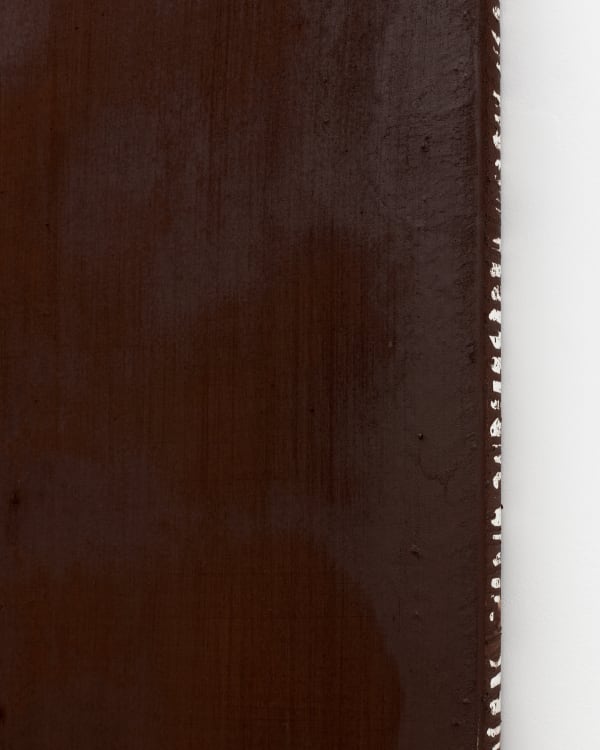-
Booth S19
June 17 - 22, 2025
-
-
Eduardo Terrazas
Eduardo Terrazas (b. 1936, Mexico) draws from a geometric language and a method inspired by the tablas of the Huichol, an Indigenous Mexican tribe. Using symmetrical structures as matrices for countless variations, Terrazas explores cosmic concepts, placing the earth at the center and the celestial dome at the periphery, while essential forces – gravitational, electromagnetic, and nuclear – compete for the space in between.The technique involves affixing colored wool onto wooden panels coated with Melipona bee wax, acting as an adhesive. The thread moves along, reproducing the lines, curves, meanders, and changes of direction required by the motif. This process entails tirelessly repeating back and forth movement, during which each strand is tightly glued along the previous one, leaving no gaps or openings between them. -
-
-
Lea Porsager
Lea Porsager (b. 1981, Denmark) works at the intersection of fabulation and speculation, spanning film, sculpture, photography, and text. Drawing from science, politics, feminism, and esotericism, she translates complex cosmologies into tactile, time-based forms. With a distinct interest in energy – both physical and metaphysical – Porsager creates experiences that challenge binary thinking and linear time, drawing viewers into fields of entangled meaning.T.I.P. (tacless, inert, perverse) (2024) presents seven disassembled tips from wind turbines, scattered across the floor. Sourced from the world’s first offshore wind farm near the coast of Vindeby, Denmark, and decommissioned in 2017, these fragments evoke both a historical symbol of visionary power and a contemporary emblem of sustainable energy.Porsager uses industrial materials to explore esoteric, often sexually charged themes. Here, she challenges the assumption that clean energy can sustain life without consequence. The wind turbine tips – once symbols of sustainability – now form a poignant ruin, a fallen monument to green idealism. Beyond their material form, these components shed their identity as mere art objects, becoming debris, measuring tools, severed limbs, or ritualistic instruments. Her approach merges imaginative inquiry and physical process, pushing perception into new dimensions while questioning the promises and limits of progress. -
-
Carlos Amorales
Carlos Amorales (b. 1970, Mexico) is a multidisciplinary artist who explores the limits of language and translation systems to venture into the field of cultural experimentation. He uses graphic production as a tool to develop linguistic structures and alternative working models that allow new forms of interpretation and foster collectivity. In his projects, Amorales examines identity construction processes, proposes a constant re signification of forms present in his work, and provokes a clash between art and pop culture.
Amorales's Fragmented Star 08 (2023) is a collage made from painted cardboard cutouts on linen. Part of the Fragmented Jungle Star series, the work continues Amorales’s investigation into abstraction, fragmentation, and visual language. The cut shapes echo typographic forms – familiar yet unreadable – suggesting a language stripped of semantic meaning. Through rhythm, color, and spatial arrangement, Amorales proposes an alternative mode of communication rooted in intuition and visual perception. This work builds on earlier series in which collage and repetition serve as tools for probing the limits of language and understanding. -
-
Gardar Eide Einarsson
Gardar Eide Einarsson’s (b. 1976, Norway) practice explores the complex dynamics of personal liberty, belonging, and the ideological influence of propaganda. Working across diverse media – including installation, painting, and sculpture – he repurposes found materials to examine the friction between individual freedom and the constraints of societal systems. His work often carries a wry sense of humor, balancing subversive undertones with a measured, critical distance.Einarsson’s recent gouaches on paper transform fragments of closed-captioning text from film and television into stark, text-based compositions. Disembodied phrases – once cues for sound, gesture, or music – are set against black backgrounds, becoming carriers of mood and psychological tension. Stripped of their original context, they hover between the poetic and the foreboding, inviting the viewer to confront the tension between visibility and absence, narrative and silence.At the centre of Einarsson’s practice is a critical inquiry into systems of control, identity, and perception. By using closed-captioning, designed to translate sound into visual information, he prompts reflection on how meaning is constructed in the absence of clarity. This results in a charged stillness that challenges our reliance on mediated narratives to understand the world. -
-
Rebecca Lindsmyr
Rebecca Lindsmyr (b. 1990, Sweden) explores questions of identity, language, and the mutable nature of the self. Her painting practice, informed by psychoanalytic and post-structuralist thought, investigates how subjectivity is formed, fractured, and reshaped over time both personally and culturally. Operating at the intersection of painterly discourse and critical theory, Lindsmyr approaches painting not as image, but as body: a layered, intertextual, psychological construction. What may initially appear as formal experimentation gradually unfolds into a dense meditation on symbolic systems, embodiment, and the ongoing negotiations of becoming.In her new body of work, Rebecca Lindsmyr continues to probe the tensions between gesture, language, and the construction of the self. Drawing from psychoanalytic and post-structuralist thought, she uses the painterly surface as both a site of projection and resistance – a field where subjectivity is formed, layered, blocked, and reassembled. The artist returns to her own handwritten signatures, repurposing them as painterly gestures. These once-functional signifiers are reframed through mechanical processes such as screen printing and repetition. While bending a tradition of reading the gesture as a trace of inner life or authorship, Lindsmyr exhausts the mark of the self, turning it into something simultaneously intimate and estranged.The surfaces of her paintings unfold like palimpsests, built through gestures of concealment and revelation. Areas of the canvas are masked or overwritten, leaving behind traces, glitches, and interruptions. Some marks feel fluid and direct, others are obscured or fragmented, like half-formed thoughts. This rhythm of layering could be suggested to mirror the psychological processes we all move through: absorbing, editing, repressing, and resurfacing. -
-
Torbjørn Rødland
Torbjørn Rødland’s (b. 1970, Norway) photographs are produced through film-based cameras and chemical processing. His self-aware and often uncanny photographs, films, and books are saturated with symbolism, lyricism, and eroticism. They take on existing visual forms and genres from still lives to portraits to landscapes, but without the research tone of first-wave conceptual art or the ironic commentary of the subsequent Pictures Generation.In his work, Rødland attempts to seize and integrate truth, rather than deconstruct it, reflecting his inclination to delve into the problematic aspects of contemporary photography and the history of art. He probes popular visual languages in search of both spiritual and perverse qualities, aiming to prolong our engagement with both still and moving images. His works do not offer quick readings; instead, they invite us to explore the layered nature of each image, encouraging personal interpretations based on our cultural, political, and personal contexts. -
-
Darío Escobar
Darío Escobar (b. 1971, Guatemala) engages in a formal and conceptual investigation of commonplace objects, recontextualizing them within the histories of art and visual culture. Since the early 1990s, he has employed ready-mades – from McDonald’s cups to vulcanized tires and sports equipment – to examine our entanglement with mass culture, identity-based consumption, and the blurred lines between high and low culture. His work prompts viewers to reflect on the social, political, and economic systems that shape everyday life.In Eclipse, Escobar constructs a sculptural constellation from found basketball hoops, installed intact but reoriented into the corner of a room. This spatial realignment transforms familiar athletic objects into a diagram of celestial geometry – evoking alignments, rituals, and choreographed motion. Echoing earlier works made from soccer balls, bicycle tires, and baseball bats, Eclipse reconfigures tools of leisure into forms that retain the wear of use: dents, scratches, and industrial finishes become traces of memory and circulation. The piece reflects on repetition and ritual while positioning sport as a contemporary echo of colonial structures – inviting viewers to consider how form, function, and cultural narratives are embedded in even the most familiar materials. -
-
Runo Lagomarsino
Runo Lagomarsino (b. 1977, Sweden) develops works that present a critical vision on the construction of history-based connection, themes or analysis in current geopolitics. His work presents a well-defined political position; they possess an unfinished and fragmented aspect and acts as provocative reflections on themes of territory and exclusion. His family tree spans the globe, born in Scandinavia to Argentinian parents descended from Italian 'émigrés' who fled Europe during the First World War. His work effortlessly shifts between installation, collage, drawing, performance, and video, but always keeps in line with his heritage and political vision, charting colonial histories and opposing modes of oppression.
Lagomarsino’s Kill All Lies, All Lies Kill, Lies Kill All (2024) draws on a provocative moment in art history. In 1974, Tony Shafrazi, then an aspiring gallery owner, vandalized Picasso’s Guernica at MoMA by spray-painting a phrase intended as LIES ALL KILL – a quote from James Joyce’s Finnegans Wake. Shafrazi’s act was both a protest against the Vietnam War and a bid for recognition within the art world. Miscalculating the letter size, he added KILL before the other words to fit the space. Though the text was quickly removed, the incident remains a powerful symbol of dissent.
Lagomarsino’s drawing reconfigures this phrase, layering the words "Kill All Lies, All Lies Kill, Lies Kill All" to explore the unstable relationship between truth and deception. The overlapping text invites viewers to reflect on language’s power, the politics of protest, and the fraught intersections of art, history, and activism. -
-
Matthew Ronay
Matthew Ronay's (b. 1976, USA) dyed basswood sculptures invite viewers into a realm where tangible forms intertwine with metaphysical energies. Rooted in automatic drawings, his works tap into deeper layers of consciousness, unveiling hidden aspects of the psyche.
Arborescent (2024) leaves viewers uncertain: Is this an underwater formation, a plant-like structure, or perhaps something not carbon-based at all? By deconstructing context, Ronay creates parables of the family, ultimately challenging perceptions of reality. This interplay reveals the core of his artistry, grounded in a profound understanding of form. Seemingly disparate objects come together in a surprisingly synthesized way, immersing viewers in a tactile experience that prompts reflection on the interconnectedness of humanity and the natural world. -
-
Michael Kvium
Michael Kvium (b. 1955, Denmark) portrays the follies of humankind. For almost half a century, his artistic exploration of the suppressed aspects of humanity, has led him across a wide array of artistic mediums. Creating images resonant with theatrical qualities, rooted in his early engagement with performance art in the 80s. Kvium’s paintings are like scenes of a play engaging in grandiose or gloomy emotions, while posing critical questions about morality, idiocies, and the rise and fall of Western civilization. The works are an invitation to the viewer, to engage in reflective introspection, to share the stage and ponder.In Kvium's Sky Piece (2025), a deep, brooding sky stretches across the composition, pierced only by the stark silhouettes of bare branches. A monochrome vertical panel runs alongside, creating a striking contrast that emphasizes the tension between quiet stillness and latent unrest. While less overtly theatrical than much of Kvium’s earlier work, Sky Piece continues his enduring exploration of mortality and the passage of time. The image hovers delicately between beauty and unease, inviting reflection on presence, absence, and the realms beyond the visible. -
-
Mads Gamdrup
Mads Gamdrup (b. 1967, Denmark) explores the interplay of light and color across various artistic mediums. Best known for his decades-long engagement with photography, his recent shift into painting might seem radical – yet within the arc of his practice, it marks a natural and necessary progression. Gamdrup has long pursued a reduction of visual language, distilling his focus to the emotive force of light and its relationship to color and material.
At first glance, Mads Gamdrup’s paintings may appear reductive, limited to material and color. Yet, a closer look reveals a bodily presence – gestural brushstrokes, traces of movement, the impression of arms and hands in motion. Materiality is central: the tactility of pigment, the weight of the brushstroke, the way a color can be perceived not just with the eyes but with the body. By stripping away imagery and composition, the awareness of surface, texture and interaction with light and color is heightened. Rather than presenting a static field, the paintings demand slow looking, where perspective shifts over time, posing essential questions about perception, contemplation and the act of seeing itself.
By reducing painting to a single color, Gamdrup invites a form of embodied looking – one that moves beyond recognition into sensory experience. The paintings are not about what they depict, but about how they are experienced. They exist in relation to the viewer, unfolding in time and space. The viewer’s movement through the space interacts with the work, and the experience shifts according to the light, scale, and texture of the painting.
-
Installation views
-
For general inquiries, please contact: inquire@nilsstaerk.dk




